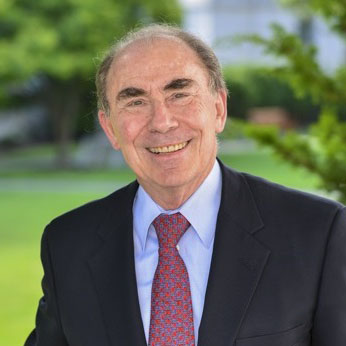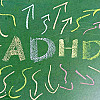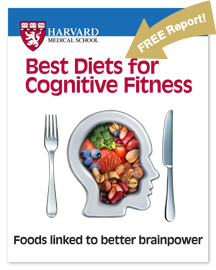Macular degeneration: Will a supplement cocktail slow it down?
Encouraging new findings suggest the AREDS2 formula might work even in late-stage dry AMD.
- Reviewed by Anthony L. Komaroff, MD, Editor in Chief, Harvard Health Letter; Editorial Advisory Board Member, Harvard Health Publishing

Age-related macular degeneration (AMD) is the leading cause of vision loss for people ages 50 or older in the United States. "AMD increases in prevalence as we get older. More than 40% of us have some form of the disease by the time we reach our 80s," says Dr. Joan Miller, chair of ophthalmology at Harvard-affiliated Massachusetts Eye and Ear and at Harvard Medical School.
The most common type of this vision-robbing disease is called dry AMD. It accounts for 90% of AMD cases, affecting about 20 million U.S. adults and hundreds of millions of people worldwide. Unfortunately, there's little we can do to stop the condition — especially when it reaches a later stage. But new evidence offers hope.
What is macular degeneration?
AMD blurs or even erases central vision. The disease occurs when cells break down in the macula, the central part of the retina (tissue in the back of the eye that turns light into signals the brain reads as images).
In dry AMD, the macula starts to thin and deteriorate as deposits of fat and protein (drusen) accumulate behind the retina. This usually happens slowly, in stages. The early or intermediate stage might not have symptoms. The late (advanced) stage causes a central blurry spot in vision that grows larger or worse with time. At that stage, AMD can become "wet."
In wet AMD, new, abnormal blood vessels grow under and into the macula. The blood vessels leak and bleed, rapidly damaging light receptor cells and causing blurred central vision.
Treatment
Treatment depends on the type of AMD you have.
For wet AMD, doctors inject medication into the eye that stops leakage and growth of abnormal, new blood vessels in the macula. The medication — anti–vascular endothelial growth factor (anti-VEGF) therapy — was discovered, developed, and tested by biomedical scientists at Harvard and elsewhere, including Dr. Miller.
For dry AMD, treatment is limited to an attempt at slowing disease progression. The most effective approach is combining a heart-healthy diet with a cocktail of antioxidant nutrients (vitamins C and E, copper, lutein, zeaxanthin, and zinc) called the AREDS2 formula (named for a study of the nutrient regimen in people with AMD).
The components of the AREDS2 formula fight free radicals, molecules abundant in the retina that cause oxidative stress (which can damage proteins and DNA within cells). Studies have shown that the supplement combination may reduce dry AMD progression to the late stage by as much as 25%.
New evidence
For years, doctors believed that the AREDS2 formula couldn't help people once they reached late-stage AMD.
However, that's now changing based on findings published in the January 2025 issue of Ophthalmology. Researchers analyzed data from more than 1,200 people involved in the two large AREDS studies, who had been randomly assigned to take either a variation of the AREDS formula or a placebo.
The researchers found that the supplement mix was able to slow the progression of retinal thinning in the center of the macula, although it didn't seem to slow the overall spread of damage and thinning. This "sparing" of the central macula corresponded to a slower loss of vision in those taking the supplement.
"The findings have made us rethink the use of the supplement," Dr. Miller says. "We used to say that it may not really help once you progress to the later form. Now I recommend that patients stay on it."
New medications
Another recent development in dry AMD treatment is controversial. In 2023, the FDA approved the first drugs to treat late-stage AMD: the eye injections pegcetacoplan (Syfovre) and avacincaptad pegol (Izervay). The drugs were not approved by European authorities.
"Both FDA drug approvals were based on trials that showed a slowing of retinal thinning, but neither drug showed any benefit in terms of vision function," Dr. Miller says. "And the medications increase the risk of AMD converting to wet AMD, which requires injections of anti-VEGF therapy."
By comparison, the AREDS2 formula has been found to slow disease progression at the center of the eye and slow vision loss safely.
What you should do
Dr. Miller advises her patients with intermediate or late-stage dry AMD to take the AREDS2 supplement and practice healthy lifestyle habits that also might help reduce risk for eye disease, such as exercising, eating a heart-healthy diet, not smoking, and controlling blood pressure.
If you're interested in trying the new medications, Dr. Miller advises speaking with your retina specialist. She says the use of the drugs is hotly debated, with many specialists holding off, including those affiliated with Harvard Medical School.
But we will likely hear more about medications to treat dry AMD and prevent the progression to its late stage, since other drugs are being studied for their ability to preserve retinal cells. "Hopefully," Dr. Miller says, "we'll have safer and more effective drugs coming out in the next few years."
Image: © siraanamwong/Getty Images
About the Author

Heidi Godman, Executive Editor, Harvard Health Letter
About the Reviewer

Anthony L. Komaroff, MD, Editor in Chief, Harvard Health Letter; Editorial Advisory Board Member, Harvard Health Publishing
Disclaimer:
As a service to our readers, Harvard Health Publishing provides access to our library of archived content. Please note the date of last review or update on all articles.
No content on this site, regardless of date, should ever be used as a substitute for direct medical advice from your doctor or other qualified clinician.
















